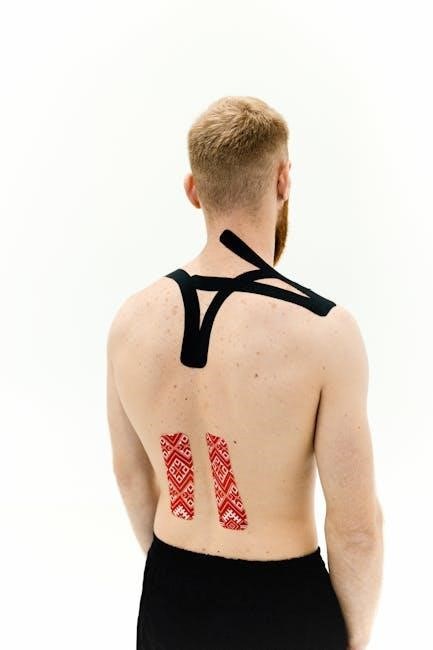Special tests for low back pain are essential in clinical practice to identify underlying pathologies‚ such as nerve compression or disc herniation․ These tests guide diagnosis‚ treatment‚ and rehabilitation planning effectively․

Overview of Special Tests in Low Back Pain Diagnosis

Special tests for low back pain are diagnostic tools used to identify specific pathologies‚ such as nerve root compression‚ disc herniation‚ or musculoskeletal dysfunction․ These tests are designed to provoke symptoms or assess movement limitations‚ helping clinicians pinpoint the source of pain․ Common tests include the Straight Leg Raise Test‚ Kemps Test‚ and Slump Test‚ which evaluate nerve tension and radicular pain․ Other tests‚ like the Trendelenburg Test‚ assess musculoskeletal imbalances․ These examinations are often combined with patient history and physical assessment to guide accurate diagnosis․ While imaging and electrophysiological studies (e․g․‚ MRI‚ EMG) are sometimes necessary‚ special tests remain a cornerstone of clinical evaluation․ They provide valuable insights into the underlying mechanisms of low back pain‚ enabling targeted treatment plans and improving patient outcomes․ Regular updates in clinical practice guidelines emphasize the importance of these tests in modern low back pain management․

Common Special Tests for Low Back Pain
Common special tests for low back pain are crucial for diagnosing lumbar spine and nerve-related issues; Key tests include the Straight Leg Raise‚ Kemps‚ Slump‚ and Trendelenburg Test‚ each targeting specific pathologies․
Straight Leg Raise Test (SLR)
The Straight Leg Raise Test (SLR) is a widely used assessment for identifying nerve root irritation‚ particularly in cases of sciatica․ During the test‚ the patient lies supine while the examiner passively lifts one leg‚ keeping the knee straight․ Pain occurring between 30° and 70° of elevation‚ especially radiating below the knee‚ suggests nerve root compression‚ often associated with disc herniation․ The examiner may also dorsiflex the foot at the point of pain to further assess nerve tension․ Importantly‚ hamstring tightness alone does not constitute a positive result; pain must be localized to the lower back or leg․ This test is valuable for localizing disc pathology and guiding further diagnostic or therapeutic interventions․ It is commonly performed in both clinical and physical therapy settings to evaluate patients with suspected lumbar disc issues․
Kemps Test
Kemps Test is a specialized assessment used to evaluate radicular pain and nerve root irritation in patients with low back pain․ The test is performed with the patient in a supine position‚ and the examiner passively lifts the patient’s leg‚ keeping it fully extended․ The leg is then moved into flexion‚ abduction‚ and external rotation․ A positive test is indicated by the reproduction of pain along the nerve root‚ typically in the lower back or radiating down the leg․ This test is particularly useful for identifying nerve root compression‚ such as in cases of disc herniation․ Kemps Test is often used in conjunction with other assessments‚ like the Straight Leg Raise Test‚ to confirm the presence of neural tension․ It is a valuable tool in clinical practice for localizing pathology and guiding treatment plans for patients with suspected nerve-related low back pain․
Slump Test
The Slump Test is a widely used assessment for identifying neural tension and nerve root irritation in patients with low back pain․ The test begins with the patient seated on the edge of a table‚ legs hanging freely․ The examiner then applies gentle pressure to the patient’s shoulders to induce thoracic flexion‚ followed by neck flexion․ Pain or discomfort in the lower back or legs during these movements suggests neural tension․ The test is further enhanced by extending the patient’s knee and dorsiflexing the foot‚ which can exacerbate symptoms if nerve involvement is present․ The Slump Test is particularly effective in diagnosing conditions such as sciatica or disc herniation․ It is often used in conjunction with other special tests to confirm the presence of neural pathology․ This test is valued for its ability to replicate symptoms and guide clinical decision-making in the management of low back pain․
Trendelenburg Test
The Trendelenburg Test is a valuable assessment tool used to evaluate hip abductor strength and identify structural or functional imbalances in the lower extremities․ The test is performed by asking the patient to stand on one leg while maintaining balance․ A positive finding is noted if the opposite hip drops or if the patient exhibits difficulty maintaining a single-leg stance․ This test is particularly useful in diagnosing conditions such as hip abductor weakness‚ leg length discrepancy‚ or sacroiliac joint dysfunction․ In the context of low back pain‚ a positive Trendelenburg Test may indicate nerve root compression‚ particularly at the L5 level‚ or other hip-related pathologies contributing to the pain․ The test provides insight into the biomechanical integrity of the pelvis and lower extremities‚ aiding in the differentiation of various causes of low back pain and guiding appropriate treatment strategies․

Additional Diagnostic Tests and Procedures
Beyond physical exams‚ additional tests like the McKenzie Test and Waddell’s Test help assess pain mechanisms and psychological components‚ guiding comprehensive low back pain management strategies effectively․

McKenzie Test
The McKenzie Test is a provocative assessment used to evaluate patients with low back pain․ It aims to determine if specific movements provoke or relieve pain‚ helping classify the pain as mechanical or non-mechanical․ During the test‚ the patient performs repeated movements such as flexion‚ extension‚ and lateral bending․ The examiner observes the pain response and range of motion․ The McKenzie Test is part of the McKenzie Method‚ a classification system for low back pain․ It helps identify directional preference‚ where certain movements centralize or worsen symptoms․ This information guides targeted exercises and treatment․ The test is particularly useful for distinguishing between discogenic and non-discogenic pain․ By identifying consistent pain patterns‚ clinicians can develop personalized rehabilitation plans‚ improving outcomes for patients with low back pain․ The McKenzie Test is widely used due to its simplicity and effectiveness in clinical practice․ It remains a cornerstone in physical therapy assessments for low back pain management․

Waddell’s Test

Waddell’s Test is a clinical assessment tool used to evaluate non-organic or psychological components of low back pain․ It consists of five specific tests and observations designed to identify patients with exaggerated pain responses or non-anatomical pain patterns․ The tests include superficial tenderness‚ non-anatomic tenderness‚ overreaction during examination‚ pain with axial loading‚ and pain upon simulated testing․ If three or more of these signs are positive‚ it suggests a psychosomatic or non-organic component to the pain․ This test helps differentiate between physical and psychological factors contributing to low back pain‚ guiding clinicians to consider a biopsychosocial approach to treatment․ Waddell’s Test is particularly useful in cases where pain persists despite minimal physical findings‚ emphasizing the importance of addressing psychological and social factors in chronic pain management․ It remains a valuable tool in comprehensive low back pain assessments‚ aiding in tailored treatment plans for patients with complex pain profiles․
Imaging and Electrophysiological Tests
Imaging‚ such as MRI and CT scans‚ provides detailed visualization of lumbar structures‚ aiding in diagnosing disc herniations or nerve compression․ Electrophysiological tests like EMG assess nerve function‚ detecting abnormalities in nerve conduction․
Role of MRI and CT Scans in Diagnosing Low Back Pain
MRI and CT scans are critical imaging tools for diagnosing low back pain‚ offering detailed insights into spinal structures․ MRI is particularly effective for visualizing soft tissues‚ such as discs‚ nerves‚ and ligaments‚ making it ideal for identifying herniated discs‚ nerve compression‚ or spinal stenosis․ CT scans‚ while less detailed for soft tissues‚ are excellent for assessing bony structures‚ fractures‚ or spondylolisthesis․ Both modalities help localize pain sources and guide treatment plans․ MRI is preferred for patients with severe or progressive neurological deficits‚ while CT scans are often used for patients with contraindications to MRI․ Imaging is typically recommended when symptoms persist beyond 6 weeks or when serious underlying conditions are suspected․ These tests complement physical examinations and special tests‚ providing a comprehensive understanding of the underlying pathology in low back pain cases․
Electromyography (EMG) for Nerve Function Assessment
Electromyography (EMG) is a diagnostic tool used to assess nerve function and muscle activity‚ particularly in cases of low back pain․ It measures the electrical signals produced by muscles‚ helping to identify nerve root compression‚ damage‚ or dysfunction․ EMG is often employed to evaluate radicular symptoms‚ such as sciatica‚ by detecting abnormal electrical activity in affected muscles․ During the test‚ small electrodes are inserted into the skin or muscles to record electrical impulses․ The results provide insights into the extent of nerve involvement and can help differentiate between musculoskeletal and neurological causes of pain․ EMG is particularly useful when imaging results are inconclusive or when further confirmation of nerve damage is needed․ It also aids in guiding therapeutic interventions‚ such as nerve blocks or physical therapy․ By combining EMG findings with clinical examination results‚ clinicians can develop targeted treatment plans for patients with low back pain․


